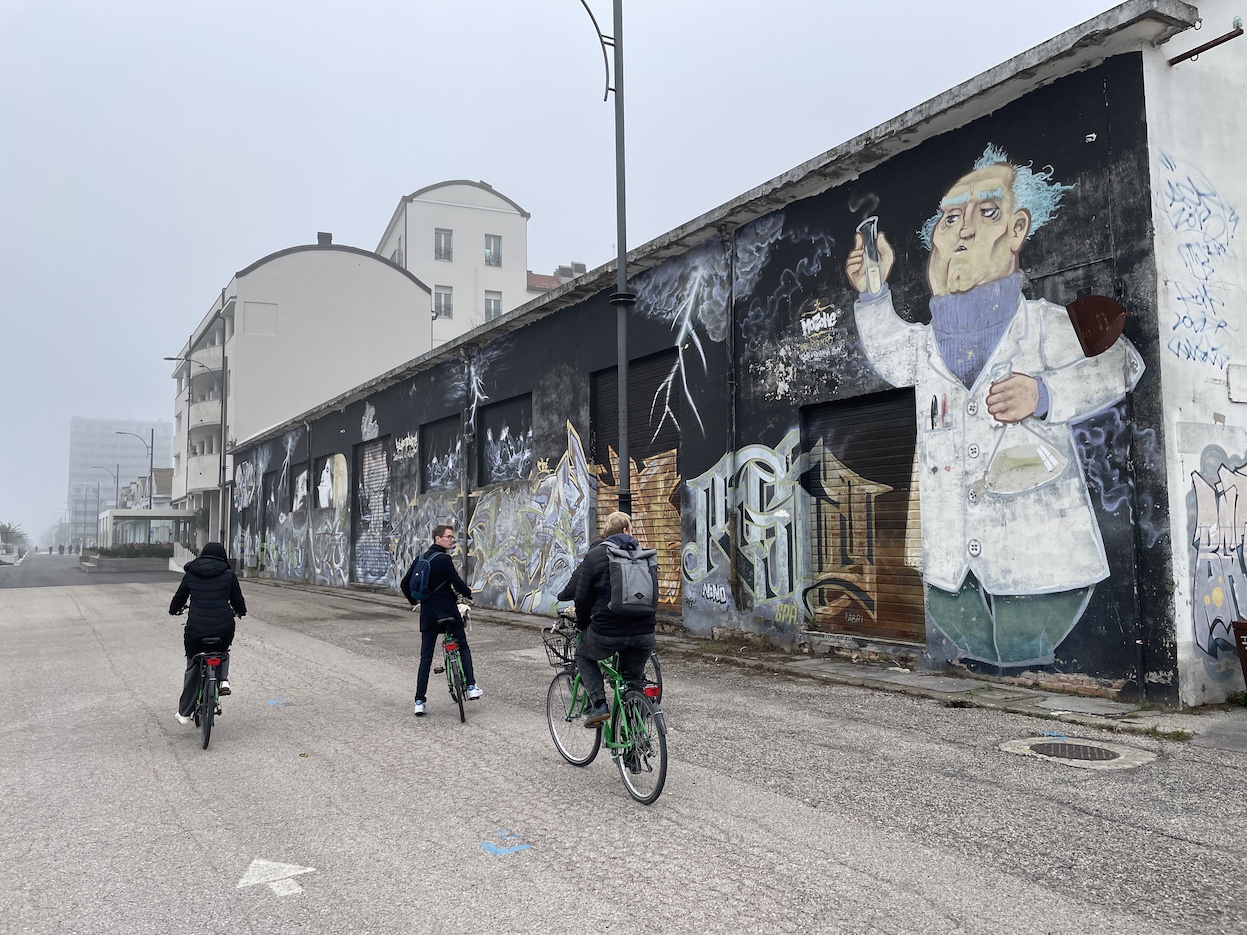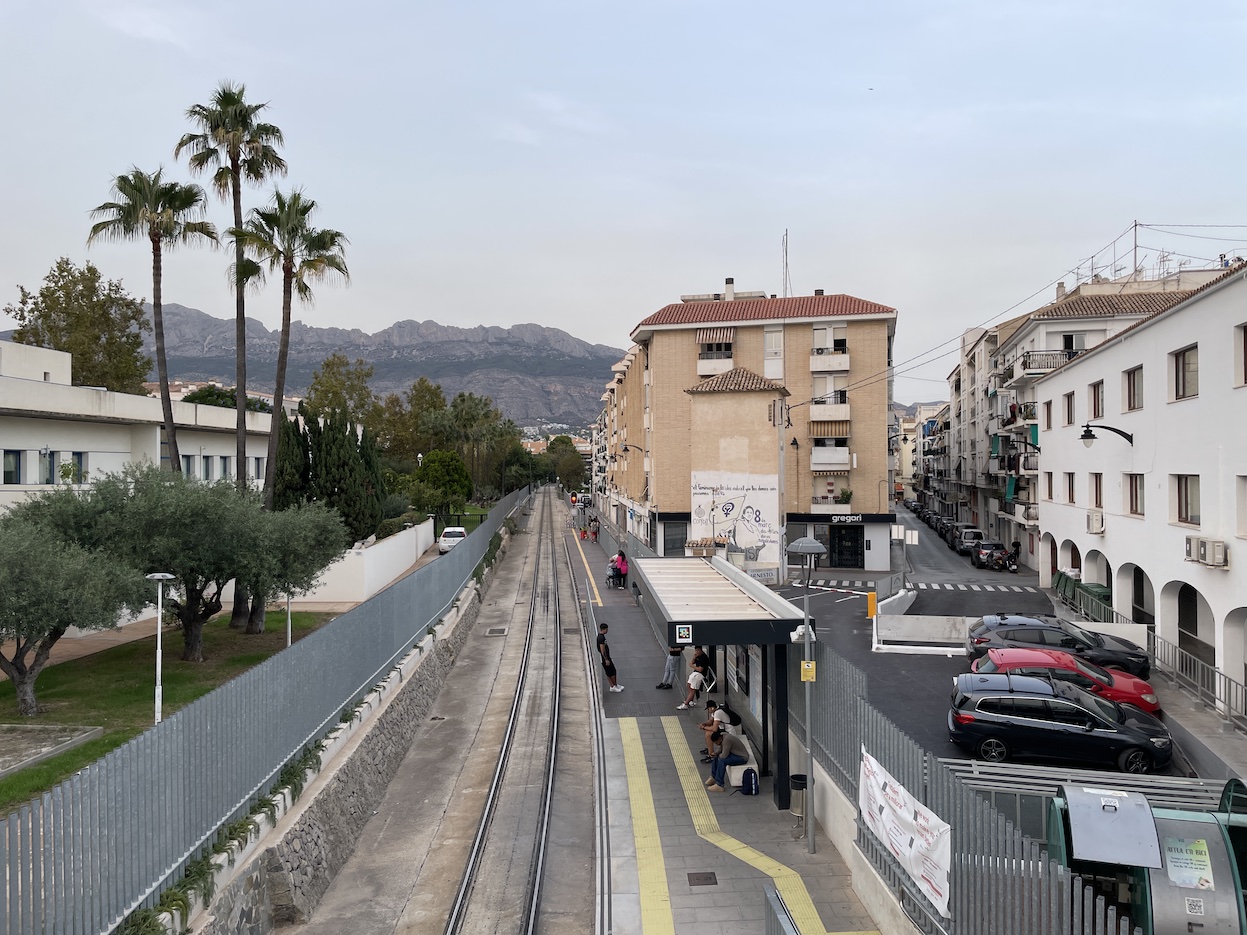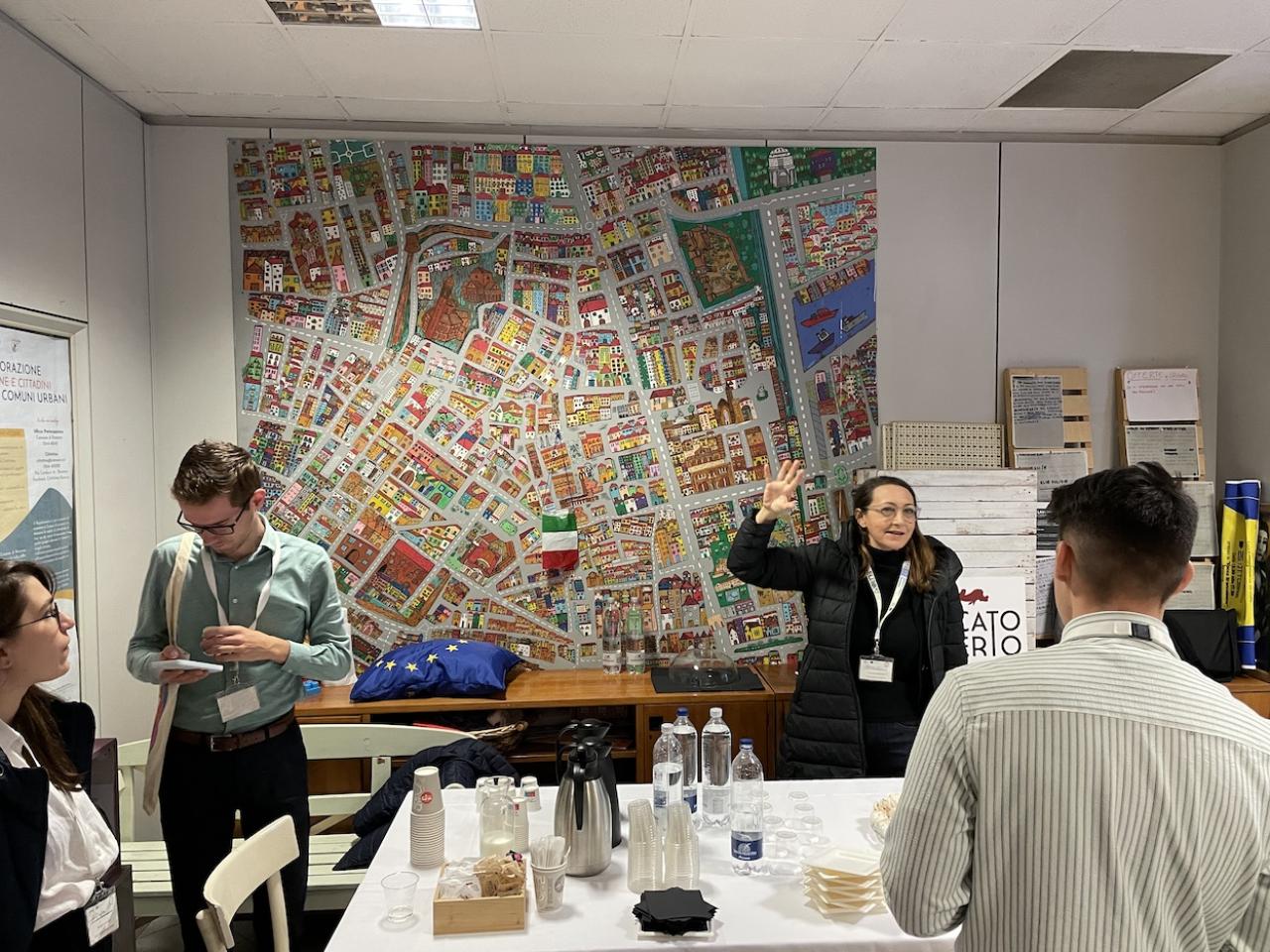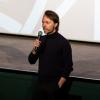“We hoped for sunshine but we’ll be happy if it doesn’t start raining,” explains Emanuela Medeghini, the head of Ravenna’s Unit for European Policies, and coordinator of the URBACT Innovation Transfer Network “Daring Cities.” Participants from seven countries gather in front of the city’s main train station to pick up their bikes at a bike rental shop. While some of us are still adjusting our bicycles, others are already slowly rolling towards the underpass that connects Ravenna’s historic centre with its former port areas and ultimately, the sea.
We’re out to explore the legacy of the Darsena, a neighbourhood located along the Candiano Canal, including the former harbour, its warehouses and connected industrial sites, residential areas, social housing complexes, sports facilities and green fields. The Darsena, once a source of the city’s richness, had in the past decades turned into a blind spot on the mental map of the Ravennati, despite a series of attempts to regenerate the area. As top-down interventions with new master plans and zoning regulations failed to bring about the expected change, the Ravenna Municipality embraced a bottom-up logic to reactivate the area, building on the desires, ideas and proposals of local residents, organisations and institutions.
Building on the skills and interests of the people living, working, going out or interested in the Darsena area, Ravenna’s Urban Innovative Action-funded DARE project combined a collaborative urban regeneration process with the creation of a horizontal data ecosystem and choral storytelling, weaving different ideas for the area into a coherent regeneration process. By connecting calls for proposals, matchmaking and deliberation at different stages of the project, DARE brought together inhabitants, civic initiatives, private companies and public officers to shape together the neighbourhood’s future. This logic, starting with an understanding of existing initiatives, and leading from a strategic vision to a selected tactic to be implemented in the Darsena, defined the structural framework of DARE and will be transferred to the cities interested in adapting Ravenna’s collaboration framework in their own socio-economic context.

As we cycle through the Darsena, I observe my companions, partners in Daring Cities. Their provenance from different parts of Europe is reflected in the facility or unease with which they ride a bicycle, revealing different habits connected to public space in their cities. Altea in Spain, Den Helder in The Netherlands, Dunaújváros in Hungary, Kragujevac in Serbia, Olomouc in the Czech Republic, Piraeus in Greece and our host, Ravenna, represent worlds apart: they differ in size and geography, they have distinct economic situations and socio-political contexts. Nevertheless, as many European cities, they also share a variety of challenges and they have a lot to exchange with each other about how they address these challenges. They all struggle with post-industrial transformation, demographic transitions, climate change and a series of urban planning and transformation issues.
Altea, a small town in Spain’s Costa Blanca, a popular tourism destination, works towards reconnecting different parts of the city now divided by a train line through placemaking and behavioural change among locals and visitors. Den Helder, a city in the extreme North of The Netherlands, focuses on improving the Visbuurt neighbourhood, offering new spaces of sociability and new life narratives for youth at risk of marginalisation and delinquency. Dunaújváros, once a prototype “socialist town” in the centre of Hungary, aims to involve citizens in an enhanced literacy and maintenance of urban nature and architectural heritage. Kragujevac, a former capital of Serbia, experiments with building an inclusive process to convert a former weapon manufacturing plant into a cultural and educational centre. Olomouc, a historical town in Moravia, seeks to transform an underused train station into a venue for culture, civil society organisations and small businesses. Piraeus, the main port of Attica plans to combine the adaptive reuse of a former train station and railway line with citizen science and climate adaptation measures in school yards. For Ravenna, Daring Cities represents the next step in the collaborative transformation of the former port area: the city will revise its tactic for the Darsena, enriched by new modes of storytelling and a more integrated data management system.
Besides their shared challenges, Daring Cities partners are also associated through their interest in the tools used by Ravenna in DARE: new spaces created by citizens allowing for sociability and exchange, storytelling rooted in these cities’ past and data collected from different sources to inform decision-making. Another element to connect cities in the Daring Cities network is the procedural framework that will allow Transfer Partners to follow a step-by-step path in which they can create a strategy, tactics and implement a selected tactic. In this framework, the various elements of DARE can be used and adapted to the local circumstances. This combination of diverse contexts, joint challenges and shared tools enables the Daring Cities network to test the methods developed in DARE in different circumstances, allowing for a better understanding of the limits and potentials of the DARE model.

When trying to describe DARE’s procedural framework, participants often evoke the concept of “strategic incrementalism", referring to an idea of urban transformation done gradually, with successive steps made towards a long-term strategy that directs these steps while also being shaped by them. “A strategy, established with a specific goal in mind, envisions possible scenarios and selects one based on what it knows about an uncertain environment,” explains Saveria Teston, one of the ideators of DARE. “The strategy constantly seeks to gather information, verify it, and adjust its actions according to the information collected and the situations encountered along the way.” An important element of DARE’s strategic framework is its capacity to acknowledge uncertainties. In DARE, this uncertainty “takes the form of the tactic to be pursued in the medium term to progress toward achieving the strategic objective,” continues Saveria. “The choice of tactic fits within the ecology of action, demonstrating how every action escapes its author once it enters a complex system of social interactions.”
As we continue our way along the Candiano Canal, looking for clues in a game designed to discover various aspects of the Darsena, we cross a landscape in transition. We pass by warehouses repurposed as restaurants, bars with generous outdoor areas, co-working spaces, new housing complexes and refurbished public spaces mixed with abandoned factories, derelict hangars, leftover fields and closed gates. I realise that the objective of our cycling tour is not to see results or achievements, but to grasp the metamorphosis in its openness and unpredictability, noticing the forking paths that open at every milestone of the Darsena’s regeneration process.
While the DARE project is officially over, the Darsena’s transformation remains an open process whose impact can only be seen in years or decades. It takes courage for a public administration to not only share power with partners in shaping and implementing urban transformation but also to keep the process open, susceptible to changes and responsive to new needs and circumstances. If incrementalism and collaboration ingrained in DARE and the Daring Cities network make processes more lengthy and complex, they also offer an antidote to the inherent anachronism of urban planning, destined to realise plans years or decades after they were conceived.


